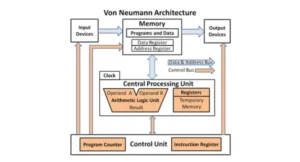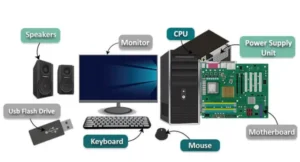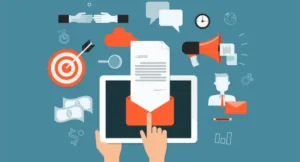Email deliverability refers to your email reaching someone’s mailbox. Not the spam folder. If your email goes to spam or does not appear, it is a problem. It’s known as an email deliverability issue. These issues can lower your deliverability score. This means fewer individuals will see your emails. Sending an email is not enough. Inbox placement is critical. Many people are unaware there is an issue. They only notice when fewer people open their emails. That’s why it’s best to check early. Fixing deliverability difficulties allows more people to read your message. It also helps your email marketing perform better.
Email Delivery vs. Email Deliverability
Email delivery indicates that your email was sent. It reached the other person’s server. You may see the “delivered” status. But that doesn’t imply they saw it. It may be in the spam folder. That’s why email deliverability is critical. It indicates where your email ends up. Some people confuse delivery and deliverability. You can achieve a high delivery rate. However, email delivery continues to be an issue. The email may not reach the inbox. An SMTP relay service can assist you send emails. However, it will not repair everything. To boost deliverability, you should also follow proper email guidelines.
Why Email Deliverability Issues Matter
Bad deliverability means people don’t see your emails. Your hard work goes to waste. Your email campaign performance gets worse. Open rates go down. Clicks and conversions also drop. People stop trusting your emails. Your sender reputation and domain reputation go down. If you get marked as spam, more emails go to spam. This can happen fast. A good email marketing strategy needs trust. You must be a trusted sender. That helps more emails reach the inbox. Fixing email deliverability issues is important. It helps you get better results. You’ll see more opens, more clicks, and more success.
Signs You Might Have Email Deliverability Issues

If fewer people open your emails or if they end up in spam, you may be experiencing deliverability issues. To identify these issues early on, keep an eye out for low click rates and high bounce rates.
Increasing spam complaints
When people mark your email as spam, it’s a clear warning flag. These email complaints may harm your sender reputation. As a result, your emails will have a more difficult time reaching their intended recipients. Feedback loop reports allow you to see who is complaining. You should check these frequently. Use an email spam checker to detect problems early. Good complaint handling is essential. Reduced spam complaints mean that fewer users designate your emails as spam. This protects your emails from spam filters. Always send useful, wanted emails. This manner, people will not report them. This safeguards your email deliverability and reputation.
Low open or click rates
If fewer individuals open or click on your emails, that’s an issue. This could indicate that they did not see your message. Or they don’t believe it. This is known as a low open rate. You must focus on open rate optimization. That entails creating stronger subject lines and email content. Monitor your engagement numbers. These display how many opens and clicks you receive. A high click rate indicates that people like your email. A low value indicates that something is amiss. Fixing this improves the effectiveness of your email campaigns. It also helps your email deliverability remain strong and trustworthy.
High bounce rates
A high bounce rate indicates that your emails aren’t getting through. Some emails bounce back due to incorrect addresses. These are hard bounces. Others leave due to short-term issues. These are softer bounces. Both are terrible for your email’s health. You should investigate bounce error codes to see what’s incorrect. Good bounce handling entails resolving these issues promptly. Regularly clean your email list. Remove any bogus or obsolete addresses. This reduces the quantity of bounced emails. When you have a low bounce rate, more emails reach genuine people. This helps your email deliverability improve quickly.
Emails not reaching inboxes
If consumers complain they did not receive your emails, it is a symptom of inbox deliverability issues. Your emails may be ending up in spam bins. That’s known as spam placement. It could happen as a result of incorrect spam filter settings. You may potentially see spam due to bad content or sending techniques. Use reports to see which emails were not received. This helps you figure out what went wrong. Fixing these issues ensures that your emails reach actual inboxes. Always check the spam filter settings. That way, your communications are safe and people can read them.
How Email Delivery Works (and Fails)

Email delivery delivers your message to someone’s inbox. Sometimes it fails and ends up as spam. Knowing why enables you to solve the problem and reach more people.
Email Sending Process Explained Simply
When you send an email, your email client communicates with a mail server. This server validates your message, email headers, and sending pattern. If all appears fine, it attempts to deliver your email. If not, it may prevent or delay the communication. This is known as message latency. If problems occur frequently, they can create email sending errors. A faulty mail server configuration might also impede delivery. So it’s critical to send emails in the proper format. Keep your sending patterns tidy. This helps to prevent problems and keeps your emails safe and speedy.
Where Email Deliverability Issues Start
Blacklisted IP addresses or domain blacklists are common causes of email deliverability issues. Spam filters may prevent your emails from reaching the inbox. Sometimes emails are misplaced. This is known as a blackholed email. To resolve this, review your delivery logs. The logs show what went wrong. Conducting delivery failure analysis allows you to learn from these mistakes. You can identify and resolve the root cause of the issue quickly. When spam filters prohibit you, it’s usually because of bad email habits. So, always follow excellent email guidelines. That way, your emails will not be blocked or deleted.
Step-by-Step Guide to Detect Email Deliverability Issues

This simple approach will help you identify email delivery issues. Check your sender’s reputation, email content, and settings. Fix these to ensure that your emails get in their intended inboxes.
1. Determine the Scope of the Problem
First, determine the size of the problem. Look at your email metrics. These numbers indicate how many emails were opened, clicked, or ignored. Conduct a complete email audit to identify any patterns. Use email monitoring tools to keep track of what occurs after you hit send. Also, review your reputation metrics. These describe how email providers perceive your communications. If you have a low score, your emails may go to spam. This step helps you get a clear picture. It helps you figure out what’s wrong. Then you may start correcting it.
2. Check Sending Service Logs and Reports
Next, check your message delivery records. These records indicate where your email went and whether there were any issues. Delivery insights inform you what’s working and what needs to be fixed. If you don’t understand the reports, ask for assistance. Your email service’s technical support team can assist you with email delivery issues. They can determine what triggered the condition. They can also assist you in resolving the issue quickly. This step ensures that your sending service is not the cause of your email failures.
3. Use Deliverability Testing Tools
Run a deliverability test to determine whether your emails are delivered to inboxes or spam bins. Use reliable email testing tools. One useful tool is Litmus Spam Filter Testing. It assists in identifying spam filter testing concerns. These tools will show you what is wrong with your email. You receive a report that is simple to grasp. Fixing these issues can help your emails get to the correct location. These technologies improve the security and quality of your emails. Always test before sending to large groups of individuals.
4. Review Bounces, Spam, and Complaints
Check to see if your emails end up in spam folders or on suppression lists. These symptoms indicate that your emails are in peril. Email suppression prevents emails from being sent to certain users. Also, review any email concerns. Good complaint management protects your sender’s reputation. Look at bounce reports to see which emails did not make it through. This is termed bounce tracking. If you address these issues promptly, your email deliverability will improve. Keeping an eye out for these indicators ensures that your emails reach their intended destination.
5. Use Message Trace and Admin Tools
You can also utilize administrative tools to troubleshoot and resolve email issues. These tools are included with Microsoft 365 and are really useful. The following three sections describe how to use them.
Microsoft 365 Message Trace
The Microsoft 365 message trace feature allows you to retrace the journey of your email. It tells if the email was sent, received, or blocked. Use it with your Microsoft 365 email account. This tool is a component of Microsoft Exchange. You receive clear message tracing results. These assist you figure out what went wrong. If the email fails, it displays the reason. This is excellent for resolving deliverability concerns quickly. It provides you complete control and information about every email.
Support and Recovery Assistant
The Support and Recovery Assistant is an automatic diagnostic tool. It functions like a smart troubleshooting wizard. It detects problems and provides solutions. This tool is quick and simple to use. It is designed for users who use Microsoft email products. Simply follow the directions on the screen. The assistant can resolve many deliverability difficulties on its own. It saves time and allows you to skip lengthy searches for answers.
Checking Service Health and Tools
Check the Microsoft 365 service health page to see whether there is a problem with the system. To locate administrative tools, navigate to the Microsoft 365 admin center. These tools allow you to check for email delivery issues. The service health page indicates whether something is down or not working. This step ensures that the problem is not on Microsoft’s side. Before performing any other fixes, always check the service’s health. It saves time and provides piece of mind.
Troubleshooting Email Deliverability Issues

If your emails do not arrive in inboxes, it is time to troubleshoot. Check your sender’s reputation, email content, and settings. Fixing these ensures that your messages arrive securely and on time.
1. Email Content Problems
Poor email content can cause messages to go to spam. Avoid excessive links or large images. Clear, straightforward text helps emails get to the inbox and keeps readers engaged.
Testing Email Content
Begin by testing your email content. Use email content testing tools to ensure that your message is accurate. These tools analyze your HTML code, email format, and plain text email version. Both plain text and HTML should be balanced. If the code is sloppy, emails may fail. Make sure your layout works well on all devices. Clean, proper coding enhances email deliverability. Always test before sending. This step allows you to identify problems earlier and makes your email safer to send.
Correcting Email Content Issues
If your test reveals difficulties, you must address them. Begin by deleting broken HTML. Then, look for spam-triggering terms and trigger words. These can prevent your emails from reaching inboxes. Avoid spam keywords such as “free” and “urgent.” Conduct a thorough email content analysis. This allows you to see which parts of your message require revisions. Fixing these minor faults boosts your sender reputation. It also helps keep your letter out of the spam folder. Always make your content clean and straightforward.
Create Engaging and Clear Emails
Make your emails simple and easy to understand. Use bold, message-appropriate subject lines. Implementing A/B testing in email marketing allows you to optimize subject lines, content, and sending times for better deliverability. Good subject lines encourage people to open your emails. Use email templates that reflect your brand. Personalize your emails by adding personal touches. This helps individuals feel special. Add alternative text to your photos. This allows users to see what the image is about even if it does not load. It also enhances your visual brand identity. People are more likely to believe emails that look beautiful and sound kind. This means higher email deliverability and greater success.
2. Authentication (SPF, DKIM, DMARC)
Email authentication helps to show that your emails are real. Using SPF, DKIM, and DMARC prevent bogus emails. This keeps your reputation and ensures that emails reach inboxes safely.
Testing Email Authentication Records
You need to check your email authentication records. This includes your SPF, DKIM, and DMARC records. These records inform email servers that your messages are safe. Email authentication prevents spammers from pretending to be you. If a record is missing or incorrect, emails may not be delivered. Use online tools to test these records. Check that each one works. This test will tell you whether your domain is protected or not. Checking records is the first step toward resolving deliverability concerns. It helps to keep your emails trustworthy and safe.
Fixing Poor Authentication Protocols
If your authentication is incorrect or missing, emails may fail to transmit. This is known as authentication failure. This causes a large number of emails to be marked as spam. To prevent this, fix your domain authentication. Check that your SPF, DKIM, and DMARC records are set up correctly. Each one must be correct for secure email transmission. You can contact your email provider or use support tools to resolve the issue. Once corrected, email servers will trust your domain. This protects your messages and enhances email deliverability. Solving these issues early saves time and protects your brand.
How to Set Up SPF, DKIM, and DMARC
SPF, DKIM, and DMARC are specialized email authentication mechanisms. They operate as shields, protecting your realm. SPF stands for Sender Policy Framework. It specifies which servers can send emails under your domain. DKIM stands for DomainKeys Identified Mail. It includes a specific signature to show that the email is yours. DMARC stands for Domain-based Message Authentication, Reporting, and Conformance. It verifies SPF and DKIM functionality and generates reports. Setting up these technologies protects your email against hackers and spam filters. You can find help manuals online or contact support to get help setting them up.
Use BIMI for Branding and Trust
BIMI stands for Brand Indicators for Message Identification. It increases people’s trust in your emails. With BIMI, your company’s logo appears in the inbox. This only works if your domain alignment is strong. First, ensure that SPF, DKIM, and DMARC are configured correctly. BIMI makes your emails appear professional and safe. It also makes your brand stand out. When people see your logo in an email, they are more inclined to open it. BIMI increases trust and makes your emails more professional. When utilized properly, it improves both branding and deliverability.
3. Sender Email Address and Domain Reputation
Your email address and domain are similar to your name online. If they have a good reputation, your emails will reach inboxes. To achieve positive results, always employ trusted names.
Test Domain and Email Reputation
To protect your emails, check your sender score and domain reputation. Use tools to verify your sender domain, IP reputation, and domain health. These tests let you determine whether users or email services trust your emails. A low score indicates your emails may not be delivered. Always check before launching a huge campaign. Keep your domain and IP addresses clean. A high reputation ensures that your emails reach recipients’ inboxes. It’s similar like having a good report card for email. Perform this test frequently to detect problems early.
Correct Domain Setup and History
Make sure your domain is configured correctly from the start. If you’re using a new domain, exercise extra caution. Email filters frequently block new domains. Check domain-based filtering to see how your emails are organized. Also, keep an eye on your subdomain’s reputation. A bad subdomain can have a negative impact on the entire domain. Always keep your domain’s settings clean and up to date. A bad setup can lead to delivery concerns. Make modifications as necessary. Your domain history is also important. The longer and clearer your domain’s history, the better. Take care of it like a digital identity.
Avoid Blacklists and Maintain Trust
Blacklists function similarly to warning lists. If your domain or IP address is listed, your emails may go to spam. To ensure your safety, use an IP blacklist checker. If you’ve been banned, take action right away to remove it. These steps help to clear your identity. Also, do regular reputation management. This includes determining whether your emails are trusted. Do not send too many emails too quickly. Avoid spammy content. Trust grows with time. Maintain persistent good behavior. People and email systems will place more trust in you if you keep your domain clean. This ensures that your emails reach the inbox rather than the spam folder.
4. IP Address Reputation
Your IP address is similar to your email’s ID. If it has a good reputation, your emails will reach inboxes. Always send nice emails to keep them clean and trustworthy.
Testing the IP Address Reputation
Your IP address enables email providers to trust your messages. Use an IP blacklist tool to see if your IP address is blacklisted. Being on a blacklist can cause your emails to go to spam. Determine whether you’re utilizing a dedicated IP or a shared IP. A dedicated IP address is exclusively used by you. A shared IP address is used by many. If others on your shared IP send bad emails, it can harm you as well. So test your IP address frequently. Keeping your IP reputation clean ensures that your emails end up in the inbox rather than the spam folder. It’s a simple method to remain safe.
Fixing IP Address Issues
If your IP has issues, solve them carefully. Use IP monitoring tools to keep track of your IP’s health. Start an IP warm-up plan to regain trust. This warming procedure involves sending a small number of emails at initially. Then gently send more. This demonstrates that your transmitting is safe and consistent. Do not hasten the process. It may take some time, but it works. A clean IP reputation indicates better email delivery. Keep monitoring your IP address. Fixing problems early can prevent your emails from being lost or blocked.
What If IP Reputation Is Beyond Fixing?
Sometimes your IP cannot be preserved. If your reputation has been severely harmed, start anew. Use a cold IP address or domain. These are brand-new and clean. Alternatively, try a new sending domain. However, don’t send too many emails at once. Begin with a leisurely warmup. Allow inboxes to learn to trust your new domain or IP address. This is a really crucial phase. It allows you to prevent going to spam again. Keep your sending practices clean. Your email reputation can be rebuilt with a clean slate and wise decisions.
5. Sending Patterns and Practices
Send emails at a regular pace. Do not send too many at once. Regular and even sending increases email providers’ trust and enhances delivery.
Avoid Irregular Email Sending
Do not send emails in random patterns. Maintain consistent sending behavior. This implies sending emails on a regular and consistent basis. Maintain the same transmission frequency every week. Maintain a consistent email cadence so that inbox filters trust you. It appears unusual when you halt and then abruptly send a large amount of data. Email services may block or filter your messages. So be steady and sensible. A regular pattern ensures that your emails arrive in inboxes rather than spam folders. This improves sender reputation and keeps your list healthy.
Build a Sending Schedule
Having a consistent email sending schedule is critical. Make a plan and stick to it. Advanced email automation tools can help you maintain consistent sending patterns and manage your campaigns more effectively. Do not send all of your emails at once. Use a ramping schedule to gradually raise the volume. Begin with fewer emails, then gradually increase the number. This appears more natural for inbox filters. Sending in bursts can disrupt your delivery. A solid routine helps your emails get read. It also safeguards your sender’s reputation. Make sure your email timing is obvious, consistent, and safe for both your audience and email systems.
Segment and Personalize Your Emails
Send the correct email to the correct person. List segmentation splits your list into smaller pieces. You can use subscriber division to group users based on their acts or tastes. These email filtering methods make your emails more useful and personal. A good segmentation near can enhance open and click rates. People prefer emails that are personal for them. It also reduces the likelihood of spam complaints. Personal emails increase trust, which increases the delivery of emails. Smart segmentation improves the effect of your email messages and improves their reach.
How to Create and Maintain a Good Sender Reputation

A good sender reputation ensures that your emails arrive in inboxes rather than spam folders. To keep it strong, send relevant emails, avoid spam traps, and closely monitor bounce rates at all times.
1. Always Send to Opted-In Recipients
To establish a positive sender reputation, only send emails to those who have given permission. Use permission-based email approaches, such as confirmed or double opt-in. This means the person clicks on a link or confirms that they wish to receive your emails. It keeps your list secure and neat. Opt-in email allows you to avoid spam complaints. It also indicates that your readers want to hear from you. When people expect your email, they are more likely to open it. This demonstrates that you can trust email services. Always ask before sending. Never buy a list. Sending emails to opted-in individuals increases the likelihood that they will get in the inbox.
2. Warm Up New IPs and Domains Properly
When using a new IP or domain, avoid sending too many emails at once. Begin slowly with domain warm up. Use email warming to establish confidence with inbox providers. Warm-up tools enable sending emails in tiny batches. Gradually increase the volume. This informs inboxes that you are safe and not a spammer. Rushing this process can harm your reputation. Warming up via email is similar to gently becoming friends. It takes time, but it works wonderfully. Using warm-up tools will keep you out of spam folders. When warming up new IPs and domains, always plan ahead of time.
3. Deal with Spam Complaints, Bounces, and Unsubscribes
Too many spam complaints can lower your sender score. Focus on reducing spam complaints. Make it easy for users to unsubscribe. Unsubscribe management helps to keep your list clean. Also, eliminate emails that bounce frequently. Email suppression is an effective approach to stop sending to invalid addresses. Keep your unsubscribe rate low. Check your email list on a frequent basis. Don’t disregard people who don’t wish to receive emails. Respect their choice. If people report you or bounce your emails, inboxes begin to distrust them. Handling these issues promptly helps to protect your email deliverability and sender reputation.
4. Clean Your Email List Regularly
A clean mailing list allows your emails to reach genuine people. Every sender should clear up their lists. Remove any obsolete or false email addresses. Bad addresses lower your sender score. Repeat this process on a regular basis to maintain good email list hygiene. Use tools to clear up your list. Professional email list cleaning services can help automate this process and ensure maximum deliverability rates. It helps to prevent spam traps and bounces. Email list cleanliness entails maintaining only active users. A dirty list distributes emails to those who do not care. That causes inboxes to block your emails. Clean lists also lead to higher open rates. Regular cleaning protects your reputation and ensures that your emails perform properly.
5. Remove Unengaged Recipients
If someone has not opened your emails in a long time, delete them. These are disengaged recipients. They are also known as non-engaged users. Keeping them lowers your open rate. Implement a sunset approach to gradually remove them from your list. First, send re-engagement emails. If they still do not react, say goodbye. This allows you to focus on active users. It also indicates to email providers that consumers love your material. Sending to unengaged people reduces your sender reputation. Cleaning them out strengthens and activates your email list. In terms of engagement, less is more.
6. Keep Infrastructure and DNS Records Updated
Your email system should be strong. Check that your email infrastructure is working properly. This includes your DNS and mail server settings. If these are incorrect or obsolete, your emails may be blocked. Always check and update them. Use tools to verify your setup. Good DNS records make inboxes trust you. Your mail server should be the same as the domain you transmit from. Email infrastructure issues can jeopardize your sender reputation. Correct errors quickly. When everything is set up correctly, your emails are delivered to the inbox. Keeping these systems updated allows you to send safely and successfully.
Email Deliverability Best Practices

To reach inboxes and avoid spam folders, use email deliverability best practices. These simple techniques will help you enhance your email success and maintain a great sender reputation.
Import Only Clean Lists
Use clean email lists to achieve the best outcomes. Email list quality is really important. A filthy list contains incorrect or inactive addresses. This can result in bounces and damage your reputation. Regular email list management keeps your list fresh and active. Regularly delete junk emails and duplicates. Sending emails to clean lists ensures that more people receive your message. It also reduces the number of spam complaints. Clean lists strengthen your email efforts. Take the time to double-check and tidy your list before importing. This easy action preserves your sender’s reputation and increases deliverability.
Use List Cleaning Tools
Use email verification and list cleaning tools to protect your list. These programs verify each email to ensure that it is legitimate and active. List cleaning eliminates invalid and hazardous emails. This reduces bounce rates and spam complaints. It also allows your emails to reach more inboxes. Email verification is simple to use and saves time. Clean lists lead to greater results and stronger email marketing. Run these tools on a regular basis to maintain the health of your list. Using list cleansing tools is prudent for all senders. It helps to protect your sender score and email deliverability.
Create an Engaged Email Segment
Concentrate on recipients who open and click your emails. Create an engaged section based on engagement signals such as open and clicks. This group is more likely to open your emails. Increasing your interaction rate will assist your emails avoid spam filters. Sending emails to an engaged group produces higher outcomes. Continue to monitor who interacts with your emails. Segment your list to send targeted messages to the appropriate people. An engaged segment helps to improve the health of your list. When recipients like your emails, your sender reputation improves. Make involvement a core component of your email strategy.
Make It Easy to Unsubscribe
Always include clear unsubscribe links and buttons in your emails. Allow people to leave your list whenever they wish. This fosters trust and demonstrates respect for their decision. If it is difficult to unsubscribe, recipients may mark your emails as spam. Easy unsubscribe links help to decrease spam complaints and safeguard your sender’s reputation. Use simple terms such as “unsubscribe” or “opt-out.” Place the link somewhere easy to find. Being honest and straightforward helps keep your list clean and active. Allowing individuals to unsubscribe simply is an excellent practice for email deliverability and user trust.
Avoid Spam Triggers in Content
Watch for spam trigger words in your emails. Words like “free,” “urgent,” or “buy now” can lead to your email being marked as spam. Removing these terms or phrases will resolve spam trigger concerns. Also, avoid all caps, excessive exclamation marks, and deceptive subject lines. The most effective information is clean and clear. Emails with spam-like content are more likely to be blocked. Use kind and honest words. This increases the visibility and open rate of your emails. Keeping your content devoid of spam triggers improves sender reputation and email delivery. Before sending your email, review it for any spam triggers.
Monitor Engagement and Deliverability Metrics
Use a metrics dashboard to track your email performance attentively. Email analytics reveal how many users open, click, or ignore your emails. Monitoring your email delivery rate alongside deliverability metrics gives you a complete picture of your campaign performance. Tracking email marketing stats allows you to learn what works and what doesn’t. Understanding key email marketing KPIs helps you measure success beyond just open rates and clicks. Use such data to better your emails over time. Watching these data allows you to identify deliverability issues early on. Metrics help you keep a great sender name. Regular monitoring allows you to improve your plan to yield greater results. An effective dashboard is critical to email success. Use it to make sensible choices and keep your emails in inboxes.
Final Thoughts
Fixing email deliverability issues is easy if you follow these steps. Always keep your email lists clean, and use safe, simple material. Proper email sending actions and optimization can be greatly helpful. Following email best practices assures that your messages are trusted and read. It is also critical to have the suitable technical email set. It means your servers and settings must be correct. When you follow these steps correctly, your emails will enter the inbox rather than the spam bin. Try to study and improve your email sending law. Good care always brings greater results and happier readers.
FAQ: Common Email Deliverability Questions

Why does my ESP say ‘Delivered’, but users don’t see the email?
Your email service provider (ESP) may show delivered status, but emails can end up in spam bins. Check your email delivery platform’s settings to improve inbox placement and eliminate buried emails.
What is a suppression list, and how does it affect delivery?
A suppression list prevents emails from reaching subscribers who have unsubscribed or bounced. This suppression section preserves your sender reputation by not sending emails to users who do not want them.
What DNS records do I need for email sending?
To ensure proper email authentication, you must have CNAME records, SPF, DKIM, and DMARC. These records help ensure that your emails are secure and trusted by inboxes.
Should I use my root domain or a subdomain?
Use a sub-domain sending technique to protect your root domain. This shields your primary domain from damage caused by email troubles.
Does open/click tracking hurt deliverability?
When click and open tracking are used excessively, they can pose problems. To avoid negatively impacting email delivery, use a tracking pixel intelligently.
Can I send marketing and transactional emails from the same domain?
Yes, but split them using urls. Separate commercial and marketing emails to protect the image of the sender.
How do I know if SPF, DKIM, and DMARC are working?
Use DMARC analytics tools to verify domain realness. They show whether your email encryption is working and whether your mails pass the tests.




